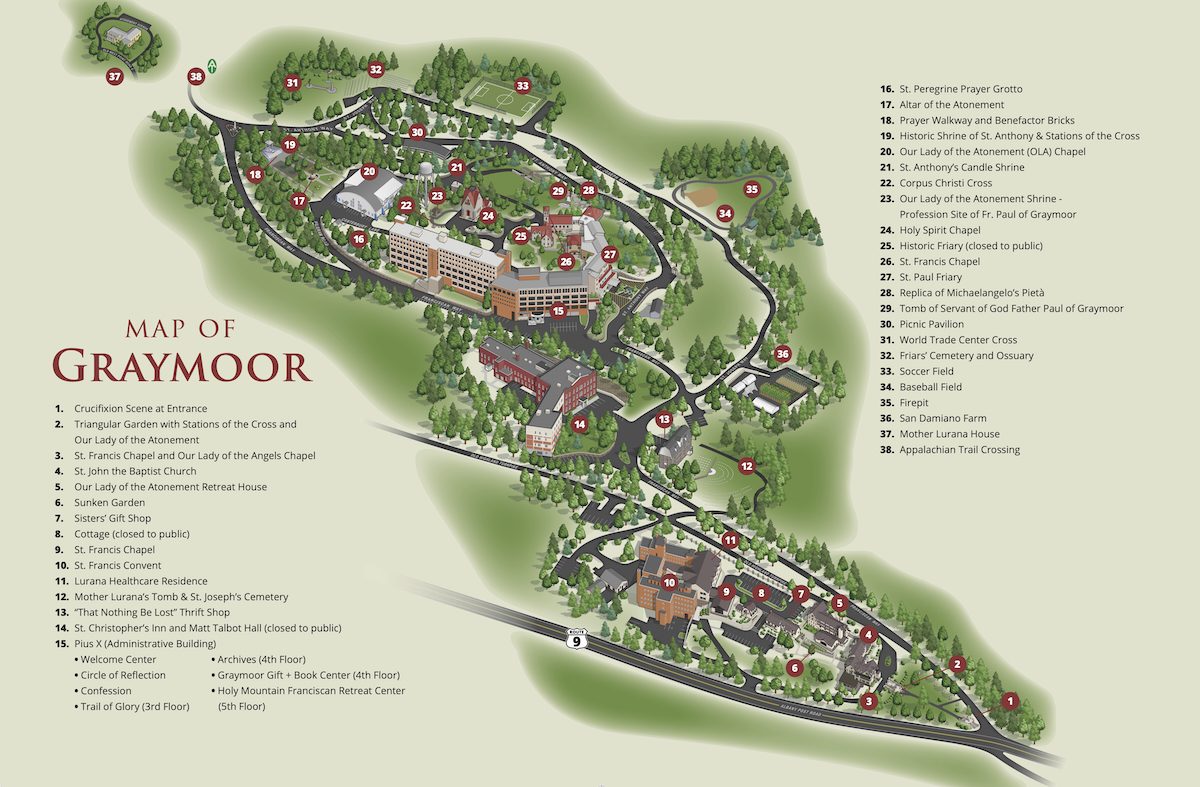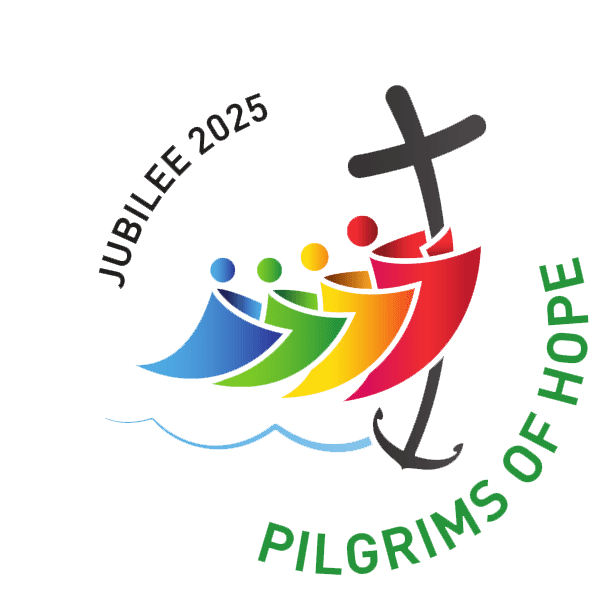
Vatican Names Graymoor a Designated Archdiocesan Pilgrimage Site
Cardinal Dolan, Archbishop of the Archdiocese of New York, has designated Graymoor as a pilgrimage site for the 2025 Jubilee Year. We are thrilled and honored to receive this opportunity, especially as it comes on the heels of our 125th anniversary. Truly, this is a remarkable gift from God….Read More
In 1875, the rector of the Episcopal Church in Garrison erected a mission church called “St. John’s In the Wilderness” about three miles from Garrison. In 1893, this abandoned and deteriorated church, was named “Graymoor” by three Anglican ladies who restored it. In the same year, Fr. Paul Wattson was inspired to name the Society he was to found “The Society of the Atonement.” In 1898, Mother Lurana White and Fr. Paul sought Graymoor to become the foundation of their newly founded Society of the Atonement. In 1925, Fr. Paul wrote, “Since God has given the Friars of the Atonement so magnificent a mountain, we look upon it in the nature of a holy obligation to erect thereon monastic buildings harmonious with their surroundings.”
Nestled in the hills of the Hudson River Valley in Putnam County, 50 miles north of New York City, Graymoor’s picturesque grounds, shrines and chapels are open dawn to dusk, year round, for the public and people of all faiths to enjoy. From the summit of Mount Atonement, marvel at the sweeping vista and the beauty of a replica of Michelangelo’s Pieta. A few steps away find the tranquility of the St. Francis Chapel, with its altar that once marked the spot where St. Francis of Assisi received his holy stigmata in 1224.
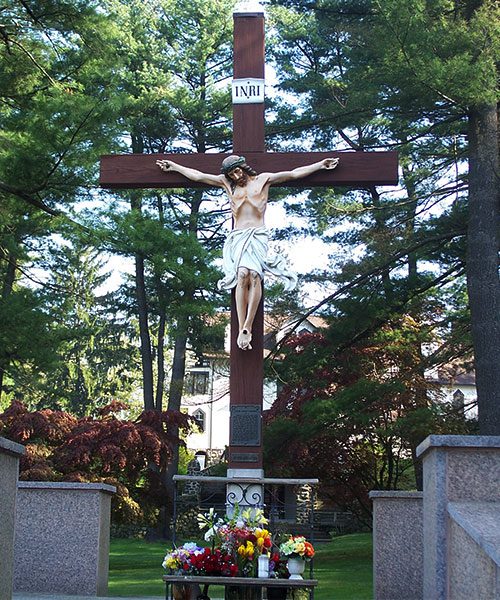
VIEW AND DOWNLOAD A MAP OF GRAYMOOR
Sites at Graymoor
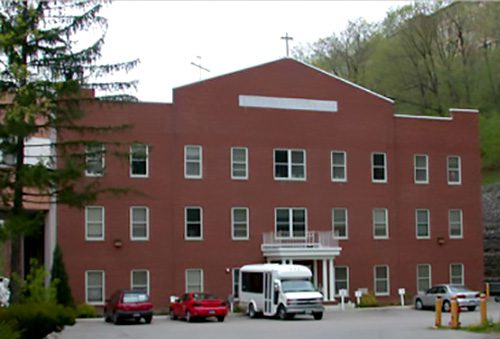
Father Paul and Mother Lurana saw the image of Christ in the homeless men who came to Graymoor. They called them “Brothers Christopher.” The first Inn began sheltering men in 1909. Since then, the Inn has been rebuilt 4 times. Today St. Christopher’s Inn provides a continuum of care for chemical dependency for up to 1000 men annually. They offer an integrated model of care including substance abuse services, healthcare, psychiatric care and shelter. Visitors are not permitted at St. Christopher’s Inn to protect client privacy.
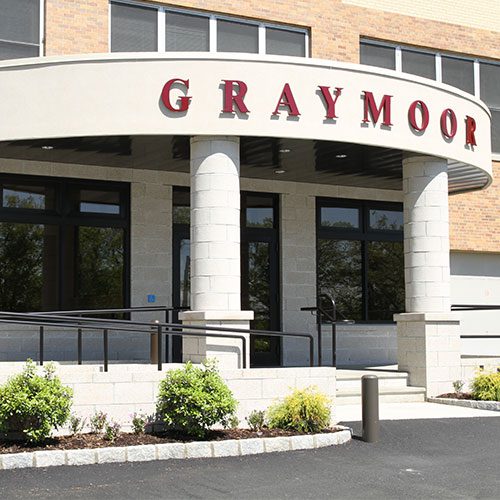
Visitors can find maps, brochures, directions, and you may access the Graymoor Spiritual Life Center and Graymoor Book and Gift Center, located in the St. Pius X building through the Welcome Center. Visitors are asked to sign our guest book.
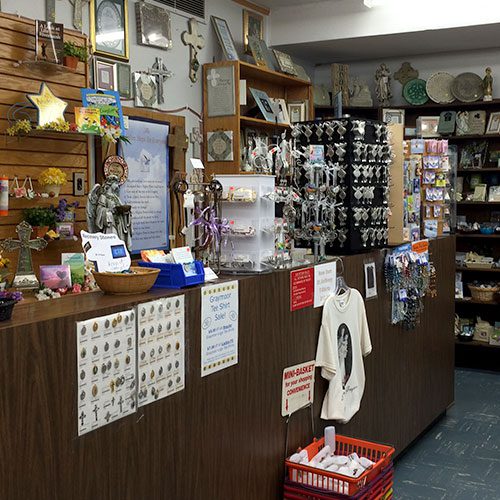
The friendly staff at the Graymoor Book and Gift Center can help you find devotional items, books, recovery items, workbooks, children’s, wedding and anniversary gifts, that will help you plant the seeds of faith. We offer thousands of items in stock including medals, cards, rosaries, statues, and all store proceeds support the Friars’ ministries.
Store Hours:
Wednesday – Saturday: 9-5
Sunday: 9-3
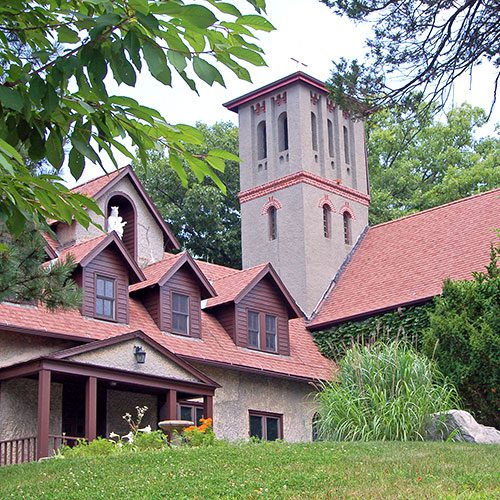
Hailed as Graymoor’s most beautiful chapel, St. Francis Chapel was built by the homeless men of St. Christopher’s Inn. The bell tower echoes that of St. Francis Basilica in Assisi. In 1930, the St. Francis Chapel altar was acquired from Mt. Alverna in Assisi where St. Francis received his holy stigmata in 1224. Facing the altar, to the left, you will find the statue of St. Anthony, where in 1912 Father Paul and the Friars began their perpetual novena to St. Anthony. The statue of St. Francis above the altar was only one of two made from a mold of St. Francis’ death mask.
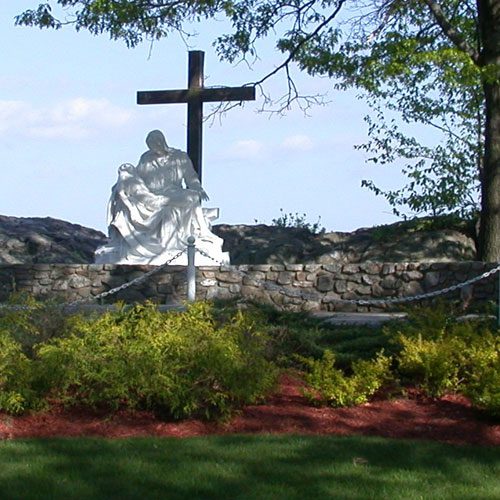
Dedicated in 1971 and occupying a spot Father Paul called Calvary Rock, Father Paul of Graymoor’s tomb bears the words of Christ, “That They All May Be One.” A replica of Michaelangelo’s Pieta looks over the tomb, and beyond that, is one of the most unsurpassed views in the Hudson Valley, where on clear day, you can see the skyline of New York City.
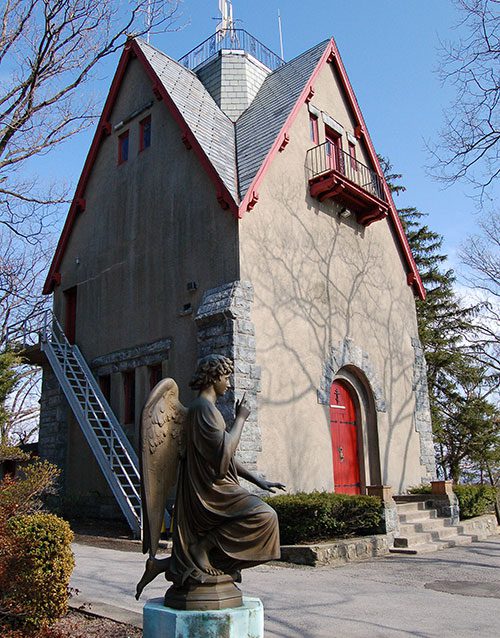
This Chapel crowns the 700 foot summit of Mount Atonement. Erected in 1919, the structure was rebuilt in the 1930s. A glass enclosed roof served as an observation site for searching the skies for suspicious aircraft during World War II. Holy Spirit Chapel combines Roman and Eastern Rite symbolism. Among its stained glass windows are one of St. Clare receiving a coarse robe from St. Francis and another of St. Francis receiving his Holy Stigmata.
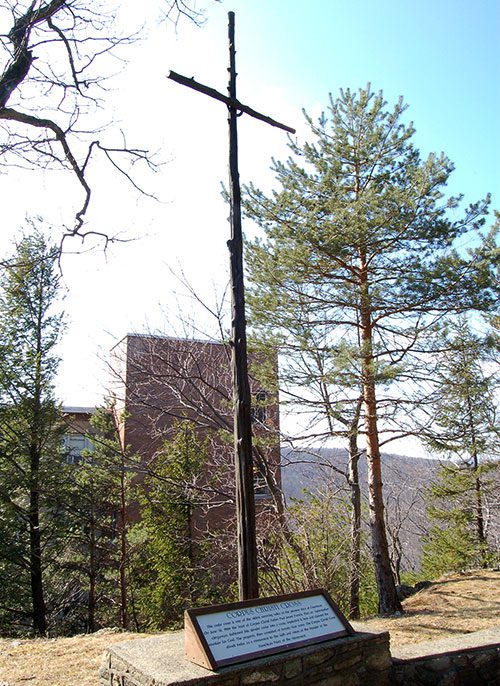
On the Feast of Corpus Christi in June 1900, Servant of God Father Paul of Graymoor claimed the site of Mount Atonement for God, and pledged that the Friars and Sisters of the Atonement would labor for the glory of God and the extension of God’s kingdom.
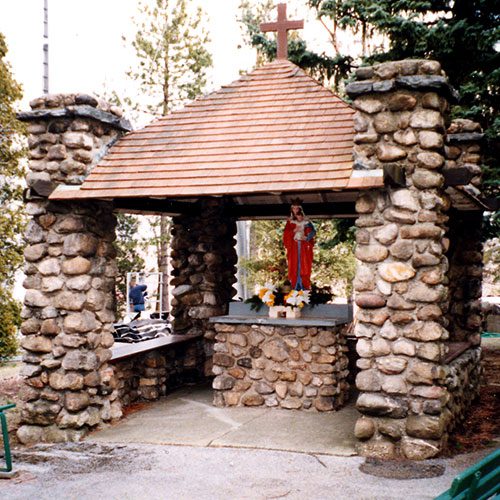
On July 27, 1900, Father Paul made his vows of poverty, chastity and obedience. The site includes a statue of Our Lady of the Atonement.
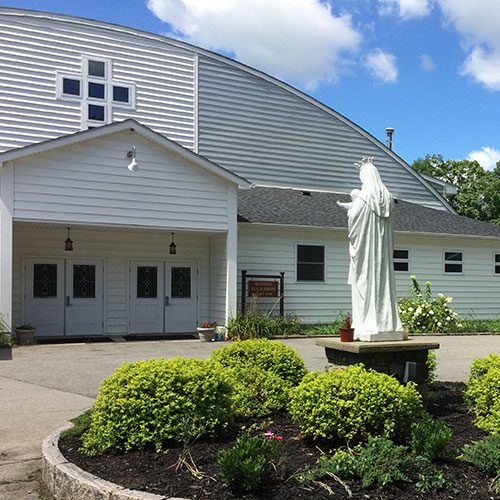
Built in 1950 as a Pilgrim Hall, a “temporary chapel” to accommodate large pilgrimage crowds, this building was constructed in a unique pillar free design, using huge Douglas Fir beams across the ceiling for support. The Chapel contains a massive icon of Christ Pantocrator.
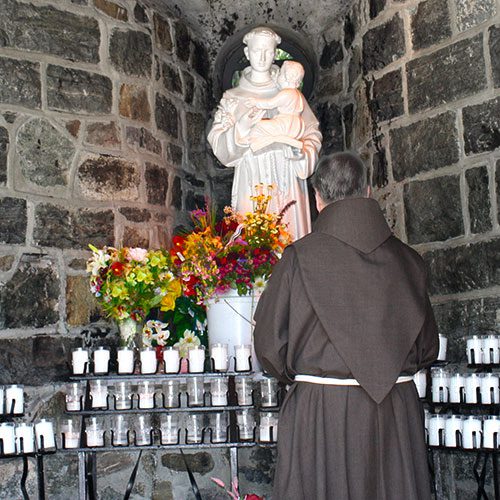
Pilgrims to Graymoor always stop to pray and light a candle at the St. Anthony Candle Grotto, as an act of devotion and faith in the miracle worker, St. Anthony’s intercession.
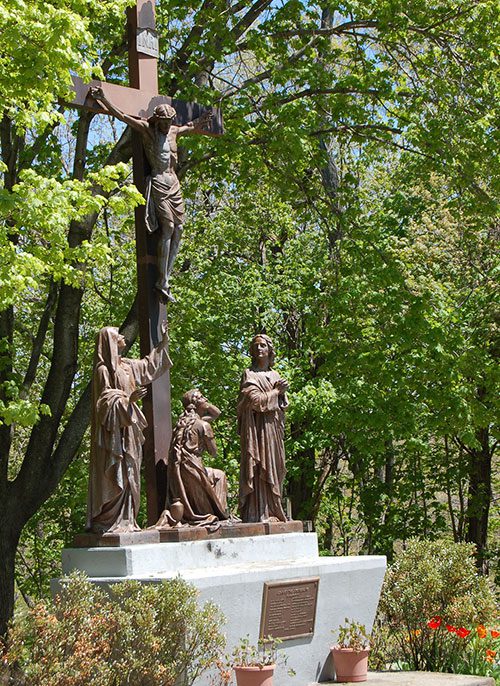
This bronze 16 foot high Crucifixion scene is at the entrance of the outdoor shrine to St. Anthony. The Stations of the Cross flank the side paths that lead to the large St. Anthony statue.
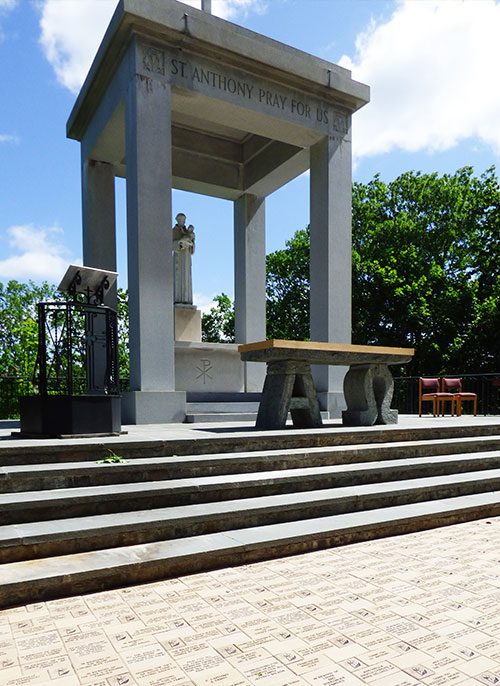
Erected in 1960, this is the largest outdoor Shrine to St. Anthony. The St. Anthony Shrine, a destination to thousands of pilgrims who flock to Graymoor for his June feast day, is the culmination of Father Paul’s dream to have a magnificent shrine dedicated to this Franciscan Saint of Miracles. The Alpha and Omega Altar was constructed of granite found on the Holy Mountain by the men of St. Christopher’s Inn and installed there in 1932. It was relocated when the granite and fieldstone Shrine was renovated and re-dedicated on its 50th anniversary. In 2016, the St. Anthony Prayer Walkway was added so the faithful could share their expressions of love, hope and thanks.
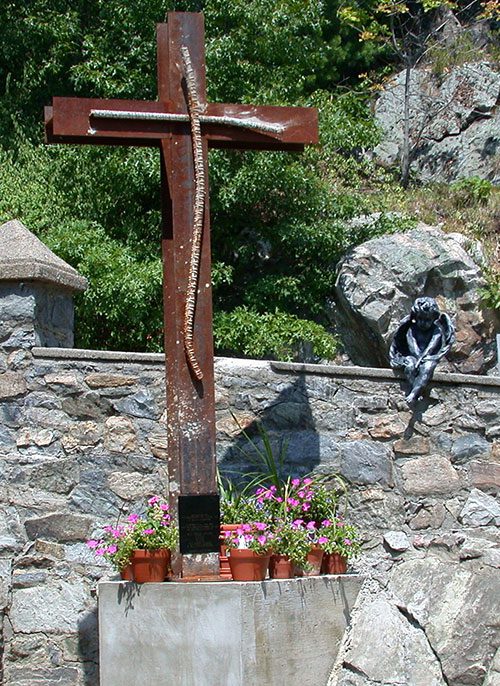
The World Trade Center Cross at Graymoor was erected by the Ironworkers of Local 40, NYC who constructed it of steel girders and ash from the WTC site, the Cross is a simple but powerful tribute to those who lost their lives on September 11, 2001. The memorial Cross was moved to a permanent location in 2016, north of the Friars’ cemetery, facing southward, toward New York City.
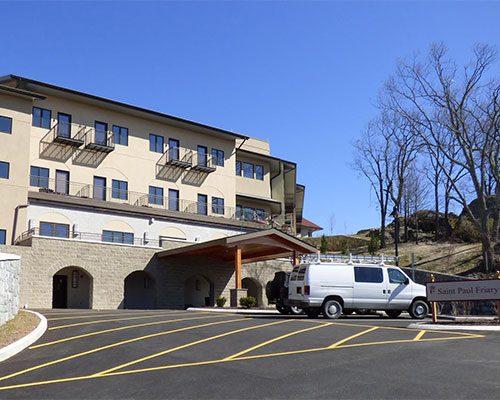
The St. Anthony Chapel of the New St. Paul’s Friary, completed in 2016, was dedicated on May 12, 2016. The Chapel is simple and Franciscan in style, using long glass panels to bring in the views of the Hudson Valley, and large glass panels near the ceiling to bring the sky and trees into view. The entry way is the location of the beautiful Little Flower panels of stained glass which tell the story of the Life of St. Therese of Lisieux. These panels were salvaged from the original Little Flower Chapel of the Friars.
DIRECTIONS TO GRAYMOOR
Graymoor is located off US Route 9 in Garrison, NY, five miles north of Peekskill, NY, and 13 miles south of I-84. Use 40 Franciscan Way, Garrison, NY 10524 for GPS assisted driving directions.
By Train: Take Metro-North’s Hudson River Line from Grand Central (or 125th Street) to Peekskill. Taxi service is available from Peekskill to Graymoor for approximately $30.

